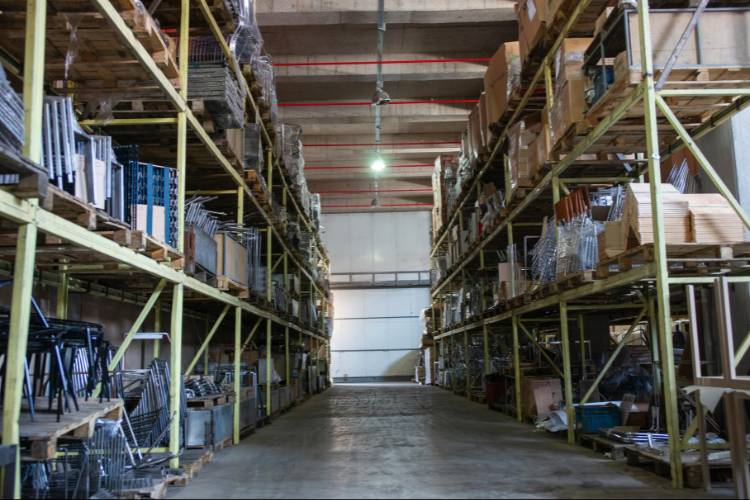Amid a massive labor shortage, subcontractors are forced to be more strategic about their workforce than ever. They have a choice between hiring their employees (provided they can find good candidates), or subcontracting with a labor company. Striking a good balance between hired and contract workers can help you run your business more efficiently.
There are plenty of administrative distinctions between hired and contract employees, especially in the realm of taxes and benefits. To zero in on the unique considerations of the construction industry, we’re going to set those broader administrative concerns aside, and just talk construction. We sat down with industry veteran Ernie Adams to discuss what to keep in mind with hired and contracted labor as you navigate a tight labor market.
Table of Contents
The Benefits of Hiring Construction Labor
- Practical Control Over Your Workforce: When you have hired employees on your payroll, you control where they go, when they go there, the uniforms they wear and what tools they use. They are working for you as a representative for your company. And you have final say over their day-to-day activities. They represent your brand, right down to the logo emblazoned on the truck they show up with on the jobsite.
- Quality Control of Work Performed: In addition to control over the workforce itself, you’re also implementing quality control on the work performed. You personally vet your workers and review their experience before hiring. This gives you greater confidence in what kind of work they do. You won’t always have a relationship with contract workers or utmost confidence in the work they’ll do in your name. This is a huge factor in why hired employees are more common than contract workers.
- No Middleman Fees to Cut Into Your Bottom Line: Hired employees work directly for you. They aren’t hired by a labor company, with their labor sold to you at markup. This decreased cost gives you a competitive advantage from a bidding perspective.
- Long Term Employee Relationships: You can strike up long term, high-value relationships with hired employees. You train them, teach them your preferences, and mold them into better workers with a deeply ingrained knowledge of your business.
The Cons of Hiring Labor
- The Pressure to Keep Crews Busy: Sometimes companies struggle to find enough men for a job, and stretch their crews thin. But in the grand tradition of “feast or famine,” the opposite sometimes occurs, where you don’t have enough work to keep your crews busy. With your crew on standby, there’s pressure to take on jobs with lower margins and/or slower payment terms than you would usually consider, which can present business risk.
- Greater Administrative Burden: Between tax considerations, benefits, and various types of insurance associated with hired employees, there’s a heavier administrative burden with hired employees. This adds to your administrative overhead.
- Longer Timeline to Locate Talent: Once you find quality workers, you’re in the clear. But the process of looking for them is a hurdle. In a tight labor market, it’s difficult to source experienced talent and you can’t rush the hiring process – a bad employee will hurt you more than help. Even if you hire based on raw potential, you still have to spend time upskilling your workers. This is something many subs are working through right now.
The Benefits of Contracting Labor
- Simplicity and Ease: In a word, contracting labor is easier. You’re often hiring them to do one job. Someone else finds the labor force, supplies them to you, and sends them to the jobsite when you need them. It’s turnkey labor without all the messy, under-the-hood tasks. “It’s cleaner, you’re essentially just cutting them a check,” says Adams.
- Less Liability: Unlike with hired employees, you don’t assume liability if a worker gets hurt on the job. The company that you’re contracting with should have insurance for their workers, so you should be covered.
- Using It Only When You Need It: All subcontractors know that construction workloads come with peaks and valleys, and occasional stretches where work is lighter than usual. With contract labor, you benefit from only using it when you need it. It’s a “catch and release” situation, where you can hire them when you need them and disband them when you don’t.
The Cons of Contracting Labor
- High Costs: Arguably the biggest con of contract labor is just how expensive it is compared to hiring. If, for example, you go through a labor company to hire a given number of workers for a specific project, the labor company may charge you a 20-30% markup on the hourly rate for the supervisor and laborers. With labor companies, you add a middleman into the mix who’s going to add their own markup. The direct nature of hiring does away with that markup. You’re paying a fee of convenience when you contract labor.
- Frequently Forbidden by Contracts: Thanks to the quality control issues mentioned earlier, a lot of contracts outright FORBID subcontractors from contracting labor. It may stipulate that you have to self-perform the work, or notify the GC if you’re going to contract it. GCs hate not knowing when contracted laborers will be used. Adams has seen plenty of issues arise when contracted laborers show up to a jobsite they weren’t expected on.
- Having to Redo Their Work: There have been instances where the original sub had to come in and fix the work of their contracted laborers, eating up time and making the sub look bad in front of the GC.
- Poor Communication with Contract Laborers: Because of limited quality control, it’s not unheard of for contract laborers to show up and not have PPE on, to not know what the scope is, or to not have any tools. Arguments may arise between you and the labor company over whose responsibility it was to provide the PPE or project information. Hired laborers will be more seamlessly monitored and informed.
- Lien Troubles: The GC didn’t sign a contract with the labor company and may not even be aware they’re on the job. If you don’t pay the labor on time, it’s possible for the GC to receive a lien from the labor company, and have no idea who they are or whether they have lien rights.
The Labor-Oriented Mistakes That Subcontractors Make As They Grow
Both contracted and hired labor can be mismanaged during business growth, to the detriment of your business. Here are some common labor mistakes that Adams has seen around both hiring and contracting.
- Straining Your Labor Force: As you grow, issues like straining to keep your crews busy will smooth out. You build a solid base of customers, have more constant cash flow, and know how to anticipate your sales and revenue figures. That’s when most subs will want to focus on growing, get overloaded, and the exact opposite will occur. You may find you suddenly don’t have enough crews, are ticking off customers, and ultimately lose work from being too competitive or growth-minded. Under these circumstances, it’s normal for subs to start contracting out labor with minimal quality control in all the mayhem.
- Overhiring and Being Forced to Make Cuts: Alternatively, you might bulk up your hired labor force in a moment of growth, find that you overshot it, and have to start cutting some of the people you hired.
The solution to both of these issues is slow, sustained growth. If you try to get too big too fast, you recognize that you were too ambitious and do a bit of a reset. That may mean backing off of your revenue/project goals about 10%, or however much is necessary for you. “Bad” growth is propelled by a tendency to take the wrong jobs just to meet numbers, or simply biting off more good jobs than you can chew. Take on more work slowly, hire slowly, and sub out in small doses when you need the extra help.
What to Consider When Hiring or Contracting Labor
- Do you have enough work to sustain your crews? Evaluate how long you are going to need the men or women you’re looking to hire or contract. How much work do you anticipate coming in? How long will those projects last? If the projects are there, hiring may be your best bet. If the present is certain but the future is shaky, contracting may be the way to go. If you’re growing, be sure that you don’t hire to grow, you grow to hire. As you assess whether that should be hiring or contracting, ask yourself how much of a project backlog you can count on. Additionally, factor in the possibility of projects being delayed. Do not make the mistake of planning for a perfect world.
- Don’t tell yourself that you can just hire a group of laborers direct and cut them after 6 months if you don’t have anything. Adams considers that bad business, and points out that “All of these guys talk. They may not want to work for you if they feel like there’s poor job security and an unpredictable project load. Word will spread.” Additionally, referrals from your existing employees can be your best channel the next time you’re looking for labor if you treat them well.
- Find out whether you need the participation of a union vs nonunion for the project in question.
- Pro Tip: Automating payroll with a system like Trayd can be a great way to reduce headaches associated with labor payment.
Neither contracting or hiring is inherently better than the other. They are different workforce tactics with different use cases. The most successful subcontractor will take a mindful approach to how they use hired and contract labor.







